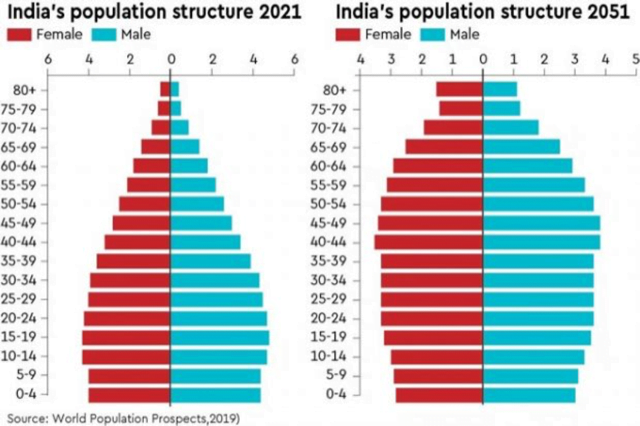UPSC Articles
SOCIETY/ GOVERNANCE
- GS-1: Population & its issues
Declining Birth Rate and need for Change
Context: The country’s fertility rate has already fallen below the replacement level, 2, according to the latest data from the National Family Health Survey.
- The ongoing shock and uncertainty caused by the pandemic will likely drive down birth rates even further.
- Decreased fertility has many rewards, but this demographic achievement might come with a price that has profound implications for India’s health, fiscal and gender policies.

What are the concerns with low birthrates?
- Shrinking Youth Population: With a lower number of births, the youth population will keep shrinking. As the size of the youth population falls, the number of older adults will surpass the young.
- Increasing Dependence Ratio: Dependency ratio is measured as the number of people aged 65 and up compared to the population aged 15-64. It has moved from 5.4 in 1960 to 9.8 in 2020 and will increase to more than 20.3 in 2050.
- Job Squeeze: Demand for work within the older adult population will grow and may result in delayed retirement, leading to a “job squeeze” in which the young and old alike compete for a limited number of jobs.
- New Health challenges: With the increased number of older adults, the number of non-communicable diseases is already outgrowing infectious diseases. This demands a significant policy shift towards preventing and managing morbidities like diabetes, cardiovascular diseases and cancer.
- Challenges with Health Insurance: Less than 1% of older adults have health insurance, and ageing-related morbidities are a grey area in terms of coverage. Most older adults depend on families and immediate relatives for healthcare. As family size shrinks due to declining births, such informal safety nets may not be a viable option in the near future.
- Challenges on Food Security: Older adults are still at risk of food and nutrition insecurity, as their declining social and economic bargaining power often makes them dependent on social security. 6% of Indians over the age of 45 have experienced insufficient food in the household which is expected to grow in future.
- Gender Issue: As the older portion of the population grow, the number of older adult women will be greater than the number of men. By 2050 women will make up 56% of India’s population at the age of 80.
- Due to the difference in life expectancy, more women will live as widows in the later stages of their lives. Historically, widowhood is closely linked to the social and economic insecurity in India.
- Older women will be less empowered, vulnerable to social insecurity and at greater risk of both chronic and acute health disorders
- Need for Reassessing Social Security Focus: India will need to reassess its social-security focus and make investments to provide the growing number of older adults with improved access to healthcare, income-security and social safety-nets.
Way Ahead
- India needs to move simultaneously towards two goals: investing in today’s youth to build a healthy and empowered population in long run, and creating a more protected platform to provide immediate benefits for older adults.
- By doing so, India can achieve “healthy ageing” and flatten the curve where disease, disability and disempowerment accumulate with age.
- Promoting healthy investment behaviours among young workers will help in economic empowerment at a later age.
- Targeted behaviour-change communication for healthy life practices will enable the youth to grow healthier.
- Replicating the model of ASHA workers, and creating a cadre of health outreach workers trained in first-line care of geriatrics will be helpful.
- The negative cultural view of old age must come to an end.
- Government policies should converge around the goal of promoting active aging to keep older adults economically productive. Senior workforce participation can be an added advantage when older adults bring their experience and wisdom to the workplace to optimise youth energy.
- Moving forward, the gendered approach to health care, food security and overall well-being must include a new dimension: old age.
- India must increase its old age pension share, which is currently 1% of the GDP.
Connecting the dots:














